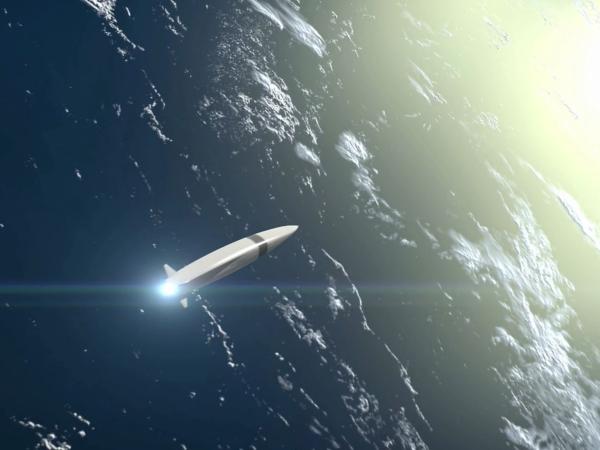By Ron Cavalieri, Business Development Manager, CAES
At CAES, we are solving the problems our customers challenge us with every day. Hypersonic weapons and other high-speed vehicles present significant technology hurdles to the Defense Industrial Base (DIB) largely because of the heat they generate flying at speeds that exceed Mach 5. The heat challenges are not limited to the aerostructure, but also extend to the enabling capabilities embedded in the hypersonic vehicle. These enablers include guidance, navigation and control sensors, seekers and communications payloads, including high temperature antennas.
CAES is an industry leader delivering a wide array of cutting-edge antenna capabilities. We have designed, manufactured and delivered hundreds of thousands of guidance and sensor antennas for precision munitions, missiles and launch vehicles. Continued investment over the last decade has aided in the delivery of critical high bandwidth antennas for precision direction finding, ES and EA, and many other radar, EW, GNC and communications applications. Materials selection and antenna constructs, modeling tools and test infrastructure are always at the forefront of antenna design considerations.
What are the technology hurdles that make hypersonics uniquely difficult? For antenna and aperture design, extreme surface temperatures and high dynamics are challenges driving requirements such as:
- Materials that can survive long duration high temperature extremes
- Materials that maintain the same RF properties at elevated temperatures
- Antenna constructs that conform to the surface and operate with or without a thermal protection system
- Modeling and simulation digital tools that work with platform derived temperature profiles or generate temperature profiles from flight profiles and platform specific features and materials
- Test equipment and infrastructure to safely test the temperature boundaries of the aperture, radome and mechanical interfaces while monitoring performance
CAES is working every day to overcome these challenges - investing in people, resources and capital to innovate and create new solutions. Our work is focused on developing a high-temperature aperture design toolkit (HADT) comprised of materials, methods, models and constructs for narrow, moderate and wideband designs. The materials will be scalable over frequency, conform to axial or non-axial symmetric platforms and perform with or without a thermal protection surface.
Our work is moving forward. CAES’s customers and DoD laboratory funded prototypes are on schedule for testing in Q4 of 2022. This initial prototype portfolio will include multiple, frequency scalable, antenna constructs designed to operate and survive surface temperatures that exceed the current threshold requirement. The prototypes demonstrate the ability to support multi-band GPS, narrow and wideband datalinks, telemetry, flight termination system, SATCOM and potentially wideband direction-finding applications.
Have questions or want to learn more? Come visit our test facilities, talk to our Hypersonic focused team and see how CAES is pushing the limits of high-performance, high-temperature apertures and antennas.
CAES is a proud sponsor and member of the University Consortium for Applied Hypersonics.
